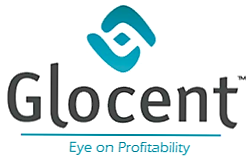
Variable Compensation: A Hybrid of Art & Science
When experiencing the challenge of creating compensation plans that cost-effectively motivate your salesforce, or workforce in general, to follow corporate strategies or meet profit objectives, you soon learn that there are many moving parts involved in that process. As markets, operations, products & services, and people change, incentive plans must adapt. Seasoned executives and managers will often argue that developing effective compensation plans is more of an art than a science. After consulting in the compensation management arena for twenty-five years, my opinion about this has evolved.
During my initial incentive management consulting work, I came to respect leaders who demonstrated an innate ability to read people and understand how to motivate them. There was no obvious science that supported their level of success. Without exception, however, successful sales leaders leveraged information, when possible, to augment their instincts. I observed over time, however, that not only were the incentive metrics often subjective, but so too were the results. As managers and executives began to appreciate the power of data, they realized that successful incentives must be based on both the art of managing people and the science of leveraging facts.
Where Science Supplants Art
I recall a client I assisted many years ago, who approached me with the objective to “increase sales”. He operated a wholesale business that serviced retails stores located across the US. His sales reps were assigned specific stores, through which his products would be sold. Although he was operating a successful company, the owner was looking to incorporate more meaningful metrics for compensating his salesforce. He realized that he needed to bring meaningful science into his management strategies. After reviewing his company’s sales data, product catalog and commission plans, the existing transactional data revealed that key portions of the company’s commission structure had no influence on salesforce behavior, and actually undermined profitability.
Most glaring was the complete disconnect between a sales rep’s efforts and the periodic commissions earned (https://glocent.com/incentives-when-close-enough-is-not-good-enough/). Under existing sales plans, a sales rep would receive a percentage of revenues generated from an assigned territory. No other metrics were used to assess the sales rep’s contribution to generating those revenues. Whether the rep visited each assigned store on a regular basis, or spent no time building a business relationship with the store, commissions were paid based upon a single metric across the entire salesforce. No metrics were used to evaluate growth, profit margins or the impact of marketing practices. Every sales rep was paid the same revenue percentage regardless of other considerations.
Another interesting revelation surfaced when we were able to document that the sales reps were actually being commissioned for loss-leader product sales at the same rate as high-margin products. In some cases, that practice led to some transactions costing more to commission the sale than the transaction was worth to the business. In some cases, the primary revenue being generated was from the loss-leader sales, which rarely led to subsequent purchases of more profitable products.
Fact-based Perception
After installing Glocent (Glocent.com), and it became possible to evaluate transactional data more accurately, the business owner quickly realized that treating every rep, territory, retail store and product the same was actually limiting his growth and stifling profitability. He adopted performance metrics that had to be met in order for sales reps to qualify for commissions. For example, each store must be visited within a specified interval. Commissions were adjusted to reflect profitability and not just revenue. If loss-leader products were offered to promote high-margin products, a certain amount of profit margin had to be achieved for those product combinations to qualify for commissions.
While the business owner knew his business, and became successful without the effective use of data and science, the transactional facts revealed significant deficiencies in the company’s incentives strategy. Soon after implementing new metrics, incentive thresholds and ranges, and performance standards, the company experienced significant growth and profitability. Within a short period of time, the company’s performance caught the attention of a large competitor, and the owner benefited from a very lucrative acquisition.
Understanding how variable compensation requires a balance of art and science and is critical to effectively influencing behavior. A proper relationship and personal intuition are essential for effectively managing salesforces. Personalities, corporate culture, market demographics, and a variety of other considerations should be part of every incentive strategy. Where considerable benefits can be realized, however, is through augmenting a manager’s or executive’s experience and expertise with measurable data and meaningful analytics. Where that becomes most apparent, is when predictive analytics derived from machine learning and artificial intelligence effectively influence incentives and performance. https://glocent.com/products-and-services/predictive-strategies-using-artificial-intelligence-and-machine-learning/
